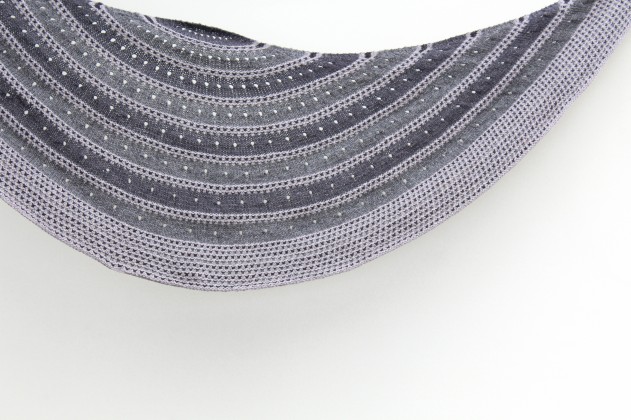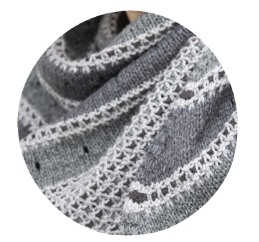
If you have been following my latest posts, you´ve started to delve into the topic of colours with me a little bit already. And it is such an interesting subject, I feel like I will never stop talking about it.
What is on the bottom of this issue, i.e. colours in knitting, is, of course, the yarn itself. Except you are dyeing your yarns at home – then this won´t be of much interest for you. But most knitters, at least on occasion, will purchase coloured yarns and thus draw from the palettes the yarn companies have to offer.
To me this provides endless fascination.
Some yarn companies go for a very unique and distinctive palette. For example, ITO works with colours that are originally aimed at the Japanese market, and have the appeal of being slightly exotic and unique to us Europeans. It helps that the colours are stylish and tasteful. Also, their fine yarns can easily be held double, which opens up new possibilities for combining colours.
Others offer limited but all the more exquisite colours, like Rosy Green Wool. All their colours are dyed obeying the strict GOTS rules, which is giving us knitters peace of mind and does not restrict the appeal of their colours at all. Plus, there are often limited editions for a couple of special colours for knitters who like to switch things up once in a while and who appreciate seasonal offerings.
Frida Fuchs, an German indie dyer, specialises in brilliant colours of great clarity and often amazing depth. Their colours are modern and at times influenced by the Pantone Fashion Color Report.
Of course there are many more yarn companies that have each their unique styles and palettes. I just picked these three for my post because they are among the yarn companies I have been working with during the last few months and that put them on the top of my mind.
So which colours do knitters choose the most often? It´s the greys. This makes a lot of sense. Grey knitted pieces are great matches with many items in almost any wardrobe. Plus, grey yarns can be mixed with just about any other colour and will balance out the chosen palette for a project.
Rosy from Rosy Green Wool has a great tip for choosing your colours: Get one of their shade cards and place the colours you are thinking about combining next to one another. Colours interact in the most interesting and often unexpected ways and no method is better than this trial-and-error real-life approach to combining colours (and we all know how our screens can deceive us!). – Read more about the complex interaction of colours in a recent post on the blog. – Also, Rosy regularly presents colour combinations on her Instagram and suggests you have a look at your wardrobe to find out which colours will complement it well before you decide on the yarn for a project.
And how does living a life for colours affect the producers of yarn more generally? I have heard the story of a lady who found out new favourite colours that totally took her by surprise – she didn´t think she´d actually like greens – simply due to the fact of almost constantly having colours on her mind. And it brings out creativity in people. Which is not least pourred into finding appropriate names for the colourways. Frida Fuchs, for example, only chooses colour names that go back to something edible or drinkable, which results in charming names like „Hubbards“ (a pumpkin), „Etna“ (wine) and „Mastix“ (the gum of the matic tree).
And of course, having every step of the process of dyeing GOTS labelled is one way to respect the environement which will undoubtedly encroach on other aspects of ones life too. It is one way to be mindful and kind, which is very important in times where the pace of life seems to be incredibly fast and everyone is stressed out all the time. We knitters are taking back taking some time. We produce something beautiful and useful and enjoy the process as much as the result!


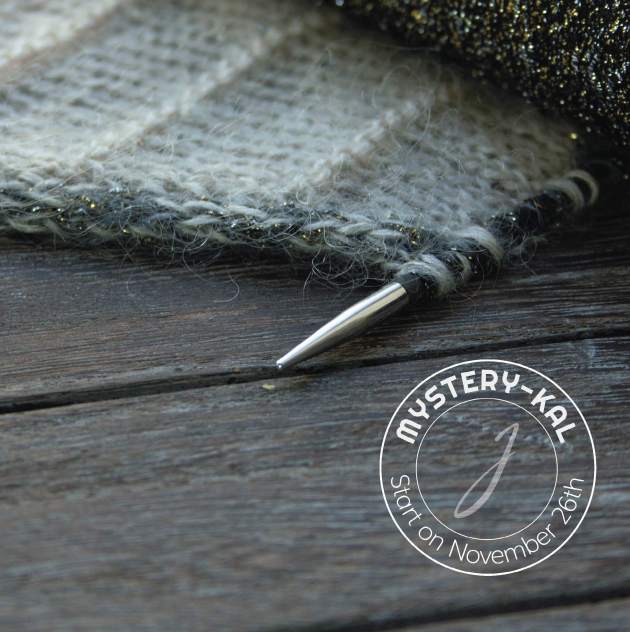

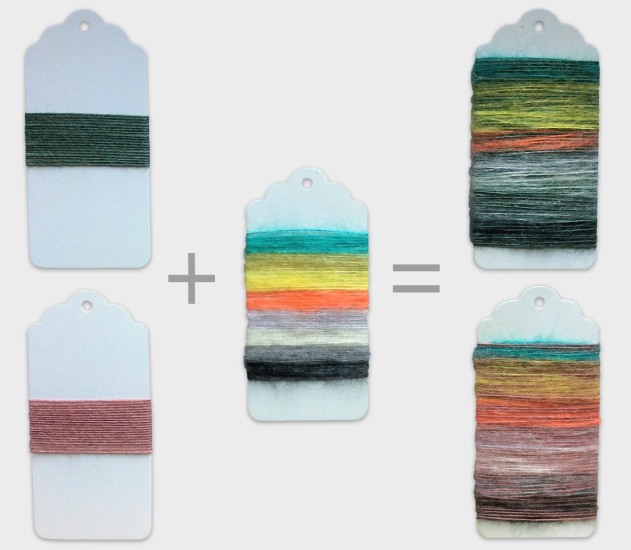
 ay to use the blending effect of working with several strands is to wind a yarn with four strands of one colour. Next wind a yarn with three strands of the base colour and one strand of a contrast colour. Then wind a 2-2 yarn and a 1-3 yarn, and finally a yarn that consists of four strands of only the new colour. You have created your own gradient yarn!
ay to use the blending effect of working with several strands is to wind a yarn with four strands of one colour. Next wind a yarn with three strands of the base colour and one strand of a contrast colour. Then wind a 2-2 yarn and a 1-3 yarn, and finally a yarn that consists of four strands of only the new colour. You have created your own gradient yarn! Starting on October 8th, we will be knitting a comfy shawl together in my ravelry group
Starting on October 8th, we will be knitting a comfy shawl together in my ravelry group  When I was reading about colours this summer, I came accross something that is called “optical mixture”. It´s a fancy name for something we all know well: When you see a pattern of tiny yellow and blue dots from a distance, you will get the impression that the area they cover is actually green. If you retreat far enough, you can no longer discern the individual dots and colours. That´s the reason why, in printing, it is possible to accurately depict a wide range of colours with only Cyan, Magenta, Yellow and Black (CMYK) as bases without the image looking all spotted. The clue is to print tiny dots.
When I was reading about colours this summer, I came accross something that is called “optical mixture”. It´s a fancy name for something we all know well: When you see a pattern of tiny yellow and blue dots from a distance, you will get the impression that the area they cover is actually green. If you retreat far enough, you can no longer discern the individual dots and colours. That´s the reason why, in printing, it is possible to accurately depict a wide range of colours with only Cyan, Magenta, Yellow and Black (CMYK) as bases without the image looking all spotted. The clue is to print tiny dots.
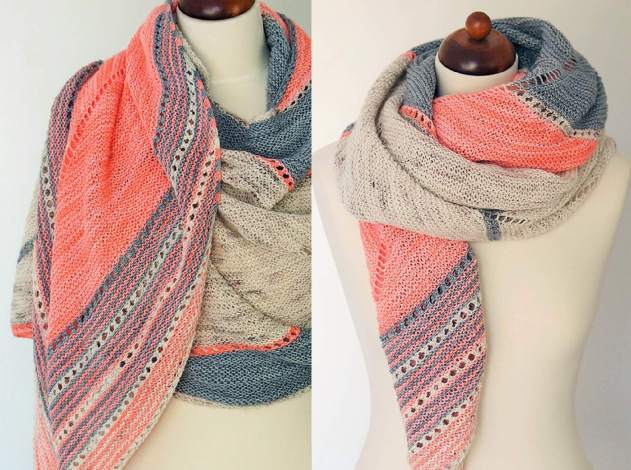

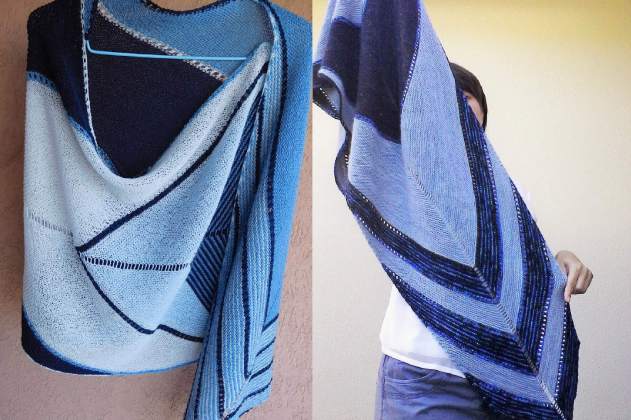

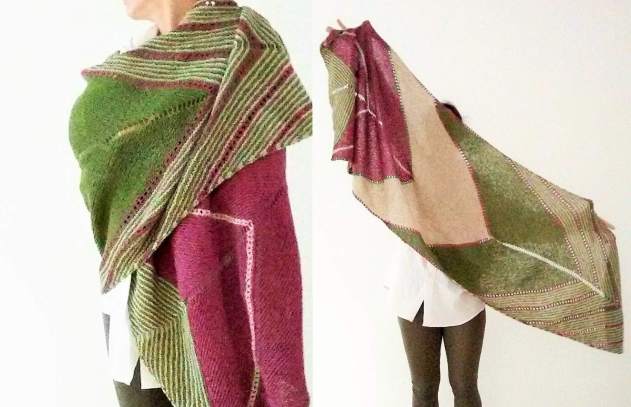


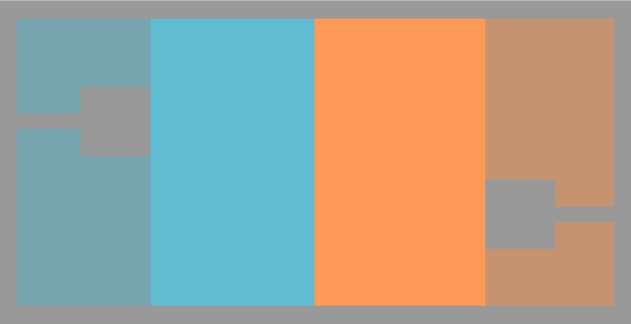



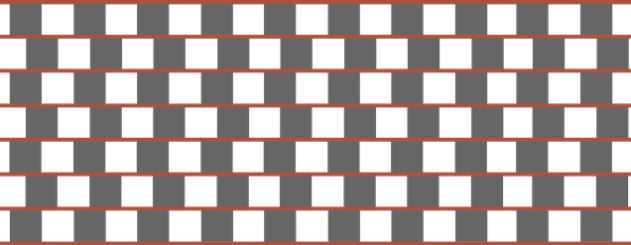
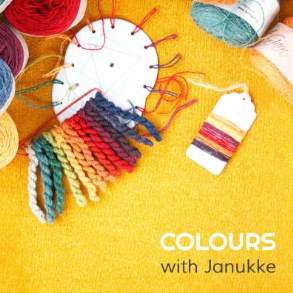 I am back to blogging after a long hiatus. I had stopped writing here because I was focusing on other aspects of being a knitwear designer. There´s a lot to do and only so much time. But right now the writing mojo is back.
I am back to blogging after a long hiatus. I had stopped writing here because I was focusing on other aspects of being a knitwear designer. There´s a lot to do and only so much time. But right now the writing mojo is back.